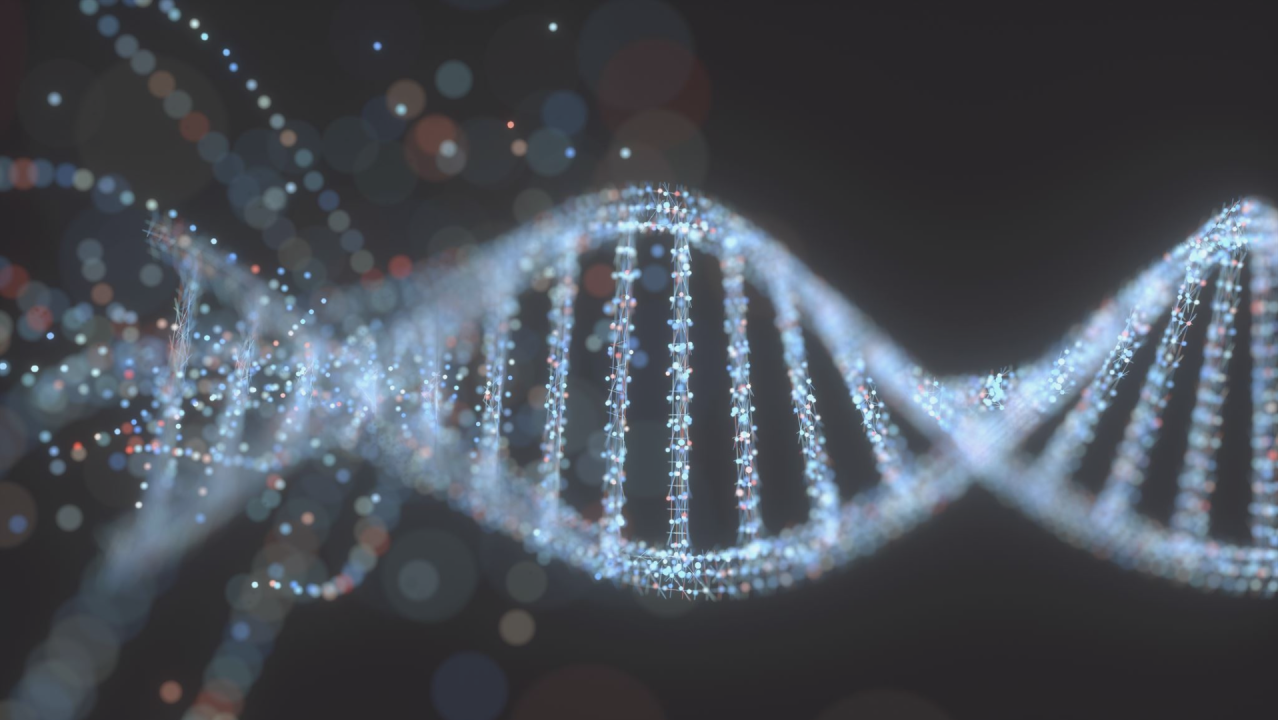Long before the discovery of the molecular bases that guide our life, Aristotle, a Greek philosopher who lived between 384 and 322 BC, while observing various forms of life, proposed the concept that organisms did not grow completely ready-made, but developed gradually from an undifferentiated mass. The idea was the opposite of what prevailed at the time, preformationism, which suggested that organisms developed from miniature versions of themselves, pre-formed and contained in sperm and eggs. Aristotle said that this process was directed by a vital force or “soul”, a more philosophical explanation, without the empirical basis of modern science, but which had at its center the unfolding of an organism’s biological potential into more complex structures and functions. This same concept resonated in the scientific field until the emergence of molecular biology and today’s epigenetics.
When the term was first used by Conrad Waddington in 1942, he used a more imaginative approach, which did not yet correspond to the study of molecular mechanisms today. Waddington uses the metaphor of a marble at the top of a hill. The hill he called the epigenetic landscape, the marble represents a cell in our body, and the paths along which it can roll represent the cell’s potential destinies, i.e. it can differentiate into a skin cell, a heart cell, a neuron, and so on. As the ball rolls down the hill it encounters forks and bends in its path. Each turning point, at which it can take different paths, represents environmental signals or internal clues that lead the cell to one destination over another. The landscape itself, with its hills and valleys, shapes the little ball’s journey, ensuring that it gets to the right place.
He manages to illustrate how the development of organisms doesn’t just depend on the gene, but on the path shaped to guide the cell to its final destination. This path can be modified, but without altering the original genes. His work laid the philosophical and conceptual foundations for what we understand today as
epigenetics: the study of changes in organisms caused by modification of gene expression rather than alteration of the genetic code itself.
To move away from the conceptual, it was necessary to understand the molecular structures responsible for the processes of heredity and gene expression, which was made possible by the development of molecular biology and genetics in the 1940s and 1960s. The existence of DNA, deoxyribonucleic acid, had already been known since 1869, when Friedrich Miescher isolated the nuclear material of leukocytes and identified its chemical composition, which differed from the biological materials already known, and which he called nuclein. But its importance as the material that transmits the information needed to generate an organism was only identified almost a century later with the sum of evidence from different researchers that culminated in the differentiation of the functions of protein material and genetic material.
In 1952, Alfred Hershey and Martha Chase were about to unravel one of biology’s greatest enigmas: what exactly inside a virus infects a bacterium? Is it your protein coat or your internal DNA? After allowing the different viruses to infect bacterial cultures, they separated the bacterial cells from the rest of the medium and differentiated the internal and external materials. They were able to literally see viral DNA, not proteins, inside bacterial cells, proving that the former carries the genetic instructions for life.
The race to unravel the structure of DNA begins. Two places stood out in this search: the Cavendish Laboratory at Cambridge University in England, where James Watson, an American biologist, and Francis Crick, a British physicist, formed a partnership; and King’s College in London, where Rosalind Franklin, a brilliant chemist and specialist in X-ray diffraction, worked together with Maurice Wilkins.
Rosalind Franklin produced X-ray images of DNA crystals that were of unprecedented clarity, especially the famous Photograph 51, which revealed that DNA had a helical structure. Watson and Crick, although they did not have direct access to Franklin’s experimental data, were indirectly informed of his findings through Wilkins and a lecture Franklin had given. Using this information, as well as their own knowledge of chemistry and biology, Watson and Crick arrived at the correct model and published it in the journal Nature in 1953. DNA was a double helix, with the nitrogenous bases inside forming specific pairs that joined the two strands together. This model explains not only the structure of DNA, but also how it could copy itself and encode genetic information.
The discovery of the structure of DNA revolutionized biology and medicine. Watson, Crick and Wilkins were awarded the Nobel Prize for Physiology or Medicine in 1962, but Franklin, who had died of cancer in 1958, was not included. Over the years, Franklin’s contribution to science received the recognition it deserved, and today she is considered one of the most influential scientists in the field of molecular biology.
The field of epigenetics was finally able to move towards molecular bases with the discovery that gene expression can be regulated. In the mid-1970s, two groups of scientists led by Robin Holliday, John Pugh and, separately, Arthur Riggs, began to unravel one of these mechanisms, DNA methylation. Imagine that our entire DNA was a library and each book corresponded to a gene. DNA methylation can be compared to putting special markers in certain library books. These bookmarks don’t change the words in the books, but they can indicate which books should be read or reserved on the shelves.
Moving into the late 1990s and early 2000s, scientists such as David Allis began to explore how proteins called histones, which help package DNA, could be modified to influence gene reading. Imagine that the histones are the librarians who organize the books. Changing how they work can make some books more accessible or hide them completely.
In 1998, Andrew Fire and Craig Mello revealed a surprising mechanism by which small RNA molecules can silence the expression of genes, known as RNA interference (RNAi). It’s as if these small molecules were messengers that intercept some of the books before they reach the reader, preventing their information from being read. In addition to RNAi, the discovery of several non-coding RNAs, including microRNAs (miRNAs) and long non-coding RNAs (lncRNAs), has revealed an additional layer of regulation.
These RNAs do not create proteins, but act as master regulators, influencing which genes are expressed.
While microRNAs act like RNAi, adding a protective cover to the book preventing it from being read, long RNAs are the literary critics of the genetic library, guiding the librarians and readers (the cells) on which books (genes) should be considered or ignored.
With the identification of epigenetic modifications, scientists began to carry out experiments to understand how these modifications are established, maintained and inherited through the generations. The development of advanced technologies, such as next-generation sequencing (NGS), has allowed scientists to map epigenetic modifications throughout the genome, giving rise to epigenomics. These technologies have made it easier to carry out large-scale studies to understand the complexity of epigenetic regulation in different biological contexts, in diseases or the effect of some environmental factor.
Epigenetics is now an interdisciplinary field that interacts with genomics, biochemistry, medicine, nutrition, toxicology and even neuroscience and psychology, exploring how environmental experiences and lifestyle can affect gene expression through epigenetic mechanisms. This has significant implications for maintaining longevity and quality of life.
It’s interesting to note that even before epigenetic changes and the factors that influence them were known, from the 1960s onwards in Brazil, people’s lives were transformed by the DeRose Method, certainly through epigenetic changes. Over the years, we’ve been able to see some of the effects on practitioners of this methodology: increased muscle tone and flexibility, increased immunity, increased vitality, memory, quick thinking, creativity, a lighter way of living life, among others.
These effects were achieved through breathing exercises, meditation, body movement, relaxation techniques and what is now known as mindfulness. Added to the concepts of behavioral reprogramming, such as good nutrition, good human relations, good emotional relations and civility. In addition to cultivating the emotions that induce happiness and well-being: generosity, sympathy and compassion.
The journey through the history of epigenetics highlights a profound truth: the script of life is much more dynamic and changeable than previously thought. This constantly evolving understanding of epigenetics not only challenges our traditional views of genetics and heredity, but also opens up new horizons for improving human vitality and longevity.
We can already see how medical care, especially for those who have access to the latest updates, is becoming increasingly personalized. We can predict that it will not only be based on our genetic code, but on epigenetic modifications shaped by our lifestyle, environment and even our thoughts and emotions. This empowers us with a sense of initiative and responsibility towards our well-being, encouraging a life lived with intention, purpose and a search for integrated practices to improve performance, vitality and longevity, such as the DeRose Method.
If you want to know more about what I teach, subscribe to my Scientia Habitus newsletter and follow me on LinkedIn and Instagram.
For those interested in the mechanisms of epigenetics linked to cell development, here ‘s a video that illustrates it.
References:
Aristotle, [GA] De Generatione Animalium. Translated as Generation of Animals, Greek and English, A. L. Peck (trans.), (Loeb Classical Library 366), Cambridge, MA: Harvard University Press, 1979.
Waddington CH. The epigenotype. 1942. Int J Epidemiol. 2012 Feb;41(1):10-3. doi: 10.1093/ije/dyr184. Epub 2011 Dec 20. PMID: 22186258.
Waddindton C.H. Waddington, C. H. The strategy of the genes. A discussion of some aspects of theoretical biology. London: George Allen & Unwin, Ltd. (1957).
Dahm, R. (2005).“Friedrich Miescher and the discovery of DNA“. Developmental Biology, 278(2), 274-288. DOI: 10.1016/j.ydbio.2004.11.028.
Watson, J.D., & Crick, F.H.C. (1953). Molecular Structure of Nucleic Acids: A Structure for Deoxyribose Nucleic Acid. Nature, 171, 737-738.
Maddox, Brenda (2002). Rosalind Franklin: The Dark Lady of DNA. HarperCollins.
Holliday, R., & Pugh, J. E. (1975). DNA modification mechanisms and gene activity during development. Science, 187(4173), 226-232.
Strahl, B. D., & Allis, C. D. (2000). The language of covalent histone modifications. Nature, 403(6765), 41-45.
Fire, A., Xu, S., Montgomery, M. K., Kostas, S. A., Driver, S. E., & Mello, C. C. (1998). Potent and specific genetic interference by double-stranded RNA in Caenorhabditis elegans. Nature, 391(6669), 806-811.
Mattick, J. S. (2001). Non-coding RNAs: the architects of eukaryotic complexity. EMBO reports, 2(11), 986-991.
DeRose. Live longer and better. Nov 2021.



